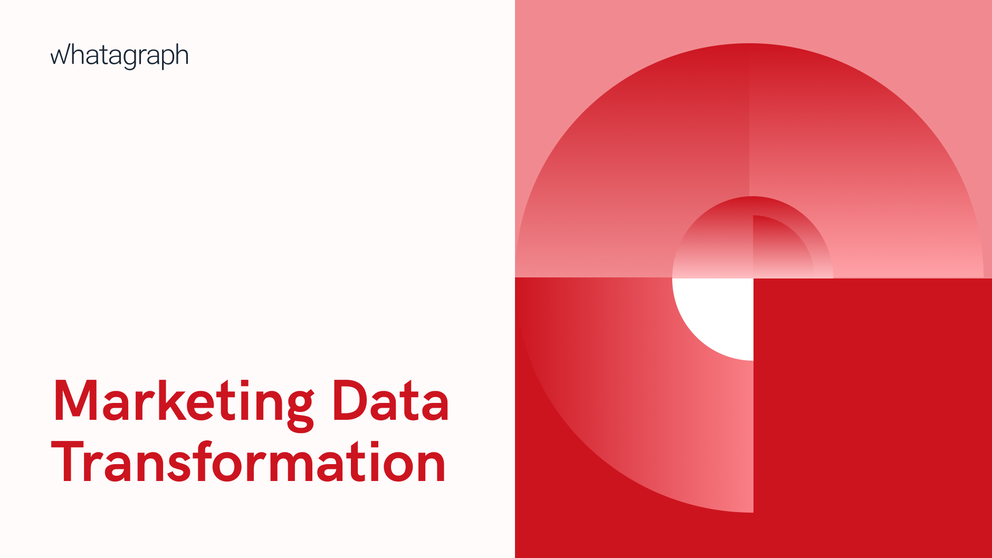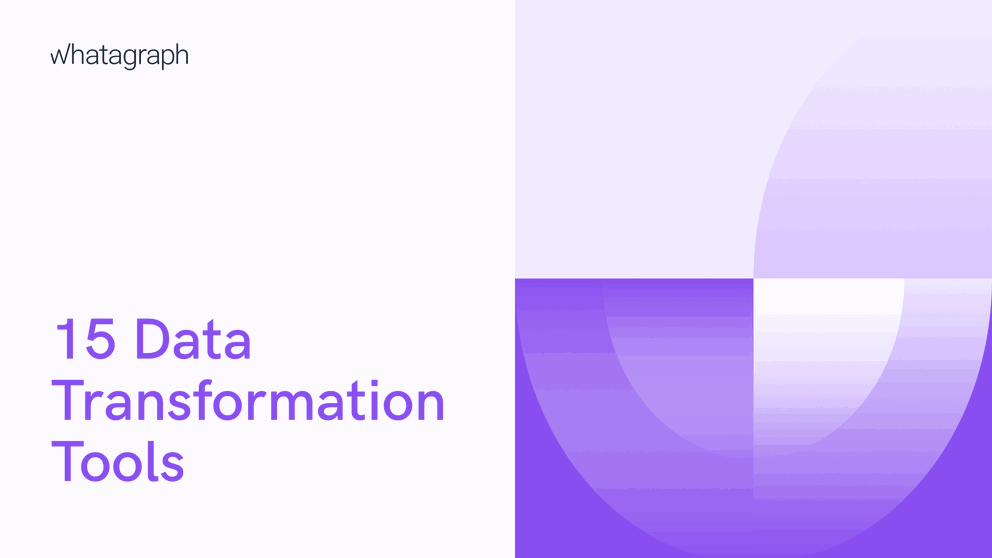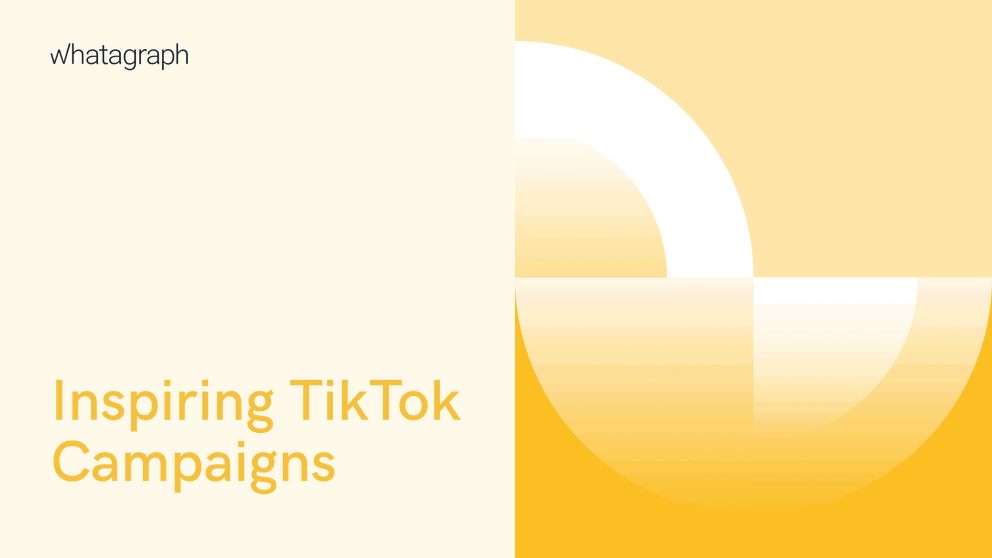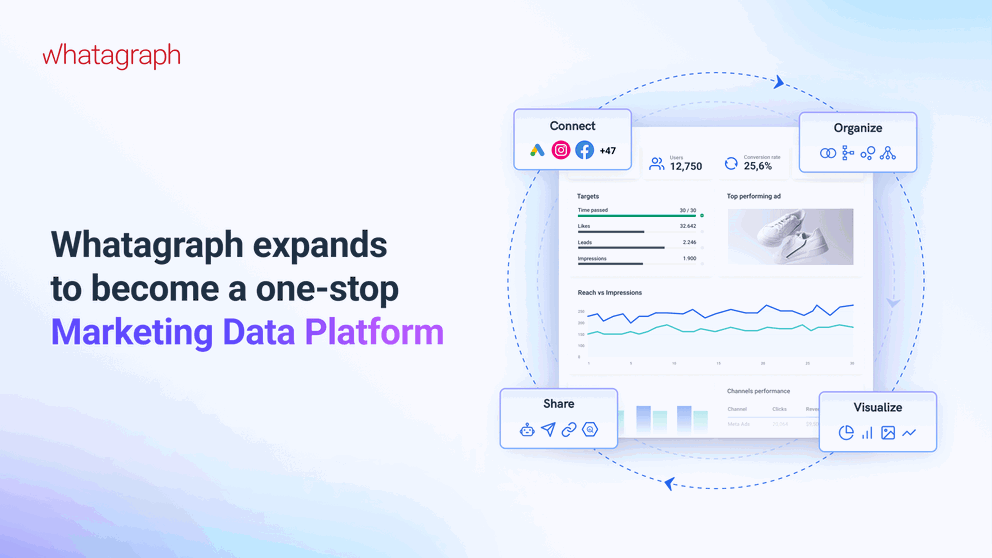One of the most popular digital marketing tools is Facebook advertising. This means that when it comes to analyzing Facebook campaign performance data, agencies will have some work to do. Facebook ads reporting can be accomplished by creating one of two things: a dashboard or a report. Learn to create them, which metrics to include, and how to manage Facebook ads for clients.
How to Create Facebook Advertising Dashboards and Reports

Jan 23 2020 ● 10 min read

Table of Contents
- What Metrics & KPIs to Track?
- When to Create Facebook Advertising Dashboards and Reports?
- Alternative to Facebook Ads Manager?
- How to Use Whatagraph for Facebook Ad Reporting?
- What to Include in the Client Facebook Report?
- How to Find the Relevant Ad, Ad Set, or Campaign?
- Conclusion
What Metrics & KPIs to Track?
Before deciding which one to create—a report or a dashboard—consider the data and metrics you need to track. There are many metrics and KPIs indicating Facebook ad campaigns performance. Here are 10 key metrics to consider:
1. Frequency
Even though every business is different, the rule applies to all of them: the higher the ad frequency, the greater the likelihood of ad fatigue. Frequency is primarily used to determine whether the audience you are targeting with your ads is not too small and that you are not overburdening them with your ads.
What's the sweet spot?
Over the course of an 8-week campaign, you should target your audience 1-3 times with your ads.
2. CPC
The average cost for each received click is indicated by the cost per click. The goal for CPC should be to reduce it as much as possible while also improving Facebook ad content to increase CTR;
3. Video Average Watch Time
Video Average Watch Time is especially important when running video ads. It will show you the percentage of videos watched. The lower the percentage, the poorer the video’s general quality;
4. CTR
Click-through-rate measures the times your ads have been clicked in relation to the received impressions. A good Facebook CTR for ads is around 0.90%;
5. CPM
The cost per mille/1k impressions metric calculates the amount of money spent per 1.000 impressions. A reasonable CPM for Facebook Ads is estimated to be around $11.19;
6. CPA
Cost per action is a metric that calculates the costs associated with each conversion. In other words, CPA is the amount of money you pay for each Facebook user action;
7. Reach
Reach metric will tell you how many unique Facebook users saw an ad. This metric is different than the impressions metric in that reach doesn’t gather multiple views from the same person;
8. Impressions
The impression metric is one of the most important brand awareness metrics as it indicates how many times a specific piece of content is displayed whenever your content is viewed. It includes all of the times a Facebook user encounters any type of content;
9. Engagements
The engagement metric will display the number of Facebook users who interacted with your post. The metric could then be subdivided into smaller measurement units such as comments, likes, and shares;
10. ROAS
Return on ad spend indicates total revenue generated from your Facebook ad campaigns. This metric will not only provide information about your ad’s performance but also whether or not your marketing efforts and investments are paying off.
When to Create Facebook Advertising Dashboards and Reports?
Depending on your needs and circumstances, you’d either create a dashboard or a report. What are those circumstances?
When a real-time view of data is required
With this Facebook Ads dashboard template, marketing agencies will be able to learn about their ad performance and campaign trends on a daily basis. By having up-to-date data on their Facebook ads metrics, marketers will be more advantageous than others because:
- They will be able to take a look at the current data and make immediate improvements.
For instance, if an ad campaign exceeds its budget, you can immediately stop or alter the PPC campaigns. This means less money spent, happier customers, and more efficient campaigns.
- Update the clients.
When it comes to agency and client relationships, it is critical to keep everyone informed. At any point, a client should be able to learn about the current state of marketing agencies' efforts and how their investment is paying off. This will not only strengthen the relationship, but clients will never question the legitimacy of an agency's work.
What's great about Whatagraph is that customization is one of the platform's best features. Marketing agencies can not only send visually appealing dashboards with real-time data, but they can also customize the dashboards to match the client's branding. Change the colors, fonts, and layout to impress your customers with your attention to detail!
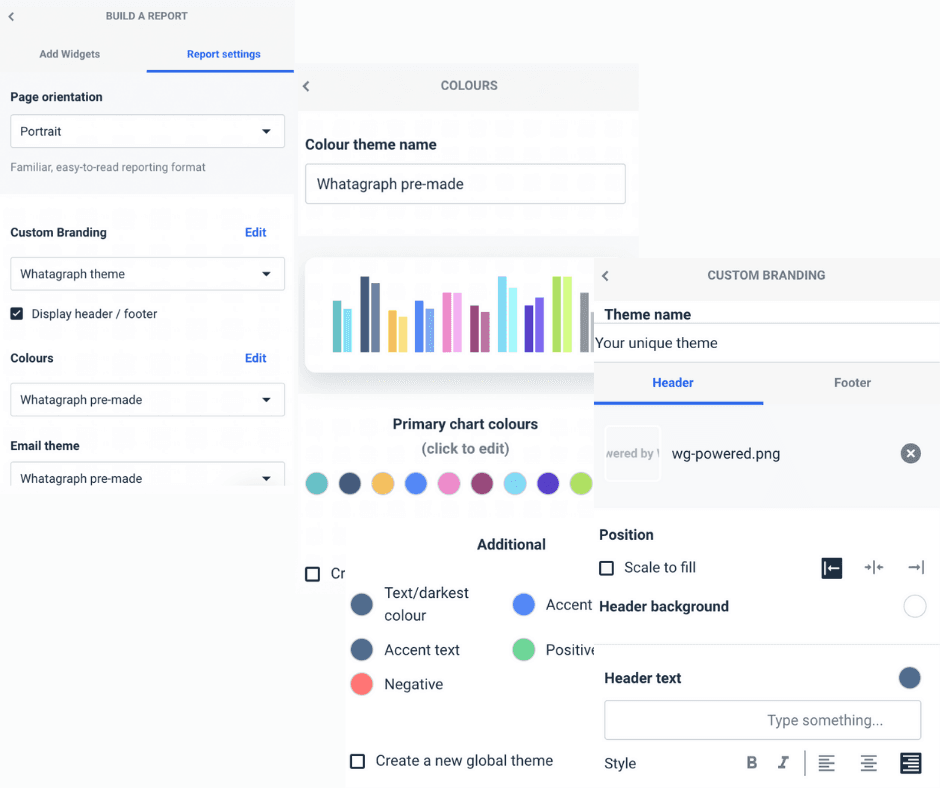
- Keep the team updated.
Nothing is more inefficient than a team that is unaware of what is going on with their own marketing campaign. Send automated hourly or daily dashboards that would provide key metrics in real-time. This will ensure that everyone keeps close track of KPIs and trends.
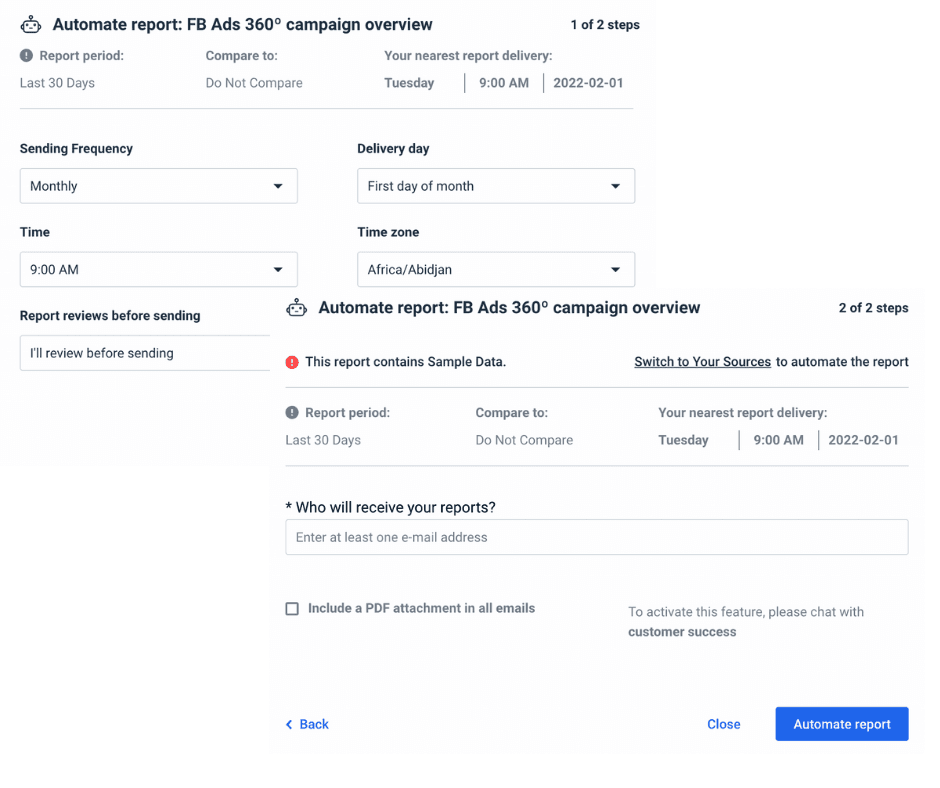
When an in-depth analysis is required
Real change comes, when relevant data from the previous ad campaigns are analyzed. Luckily, Whatagraph tracks not only real-time data but historical too.
- Discover how your marketing campaign is progressing.
Here is a Facebook ads report template that will collect performance data for all KPIs. By having a 360° campaign overview, it will be easier to analyze ad sets and campaigns to make data-driven changes. Optimize your performance by generating a comprehensive report and reviewing: unique impressions; total ad spends and comparing it to previous months; and learning about CPC changes.
- Learn about the target audience's behaviors and patterns.
Do you know when your target audience is most active? Which content do they interact with the most? What ads are being clicked on? If you don’t know the answers to these simple questions, you need Facebook reporting software!
- Analyze and identify potential Facebook ad campaign flaws.
It requires a skilled eye to spot slowly decreasing numbers (whether it’s CTR or ROAS). It is, however, nearly impossible to do so without a report. Create your first report now and look for potential errors. The most important thing is to recognize them and make immediate improvements.
Alternative to Facebook Ads Manager?
Whatagraph is a fantastic tool that provides important data for optimizing Facebook ads and delivering successful ad campaigns.
To start using this tool:
1. Create a Whatagraph account.
All you need is your company email address and a password. You can start using Whatagraph’s Facebook ads reporting tool for free right now!
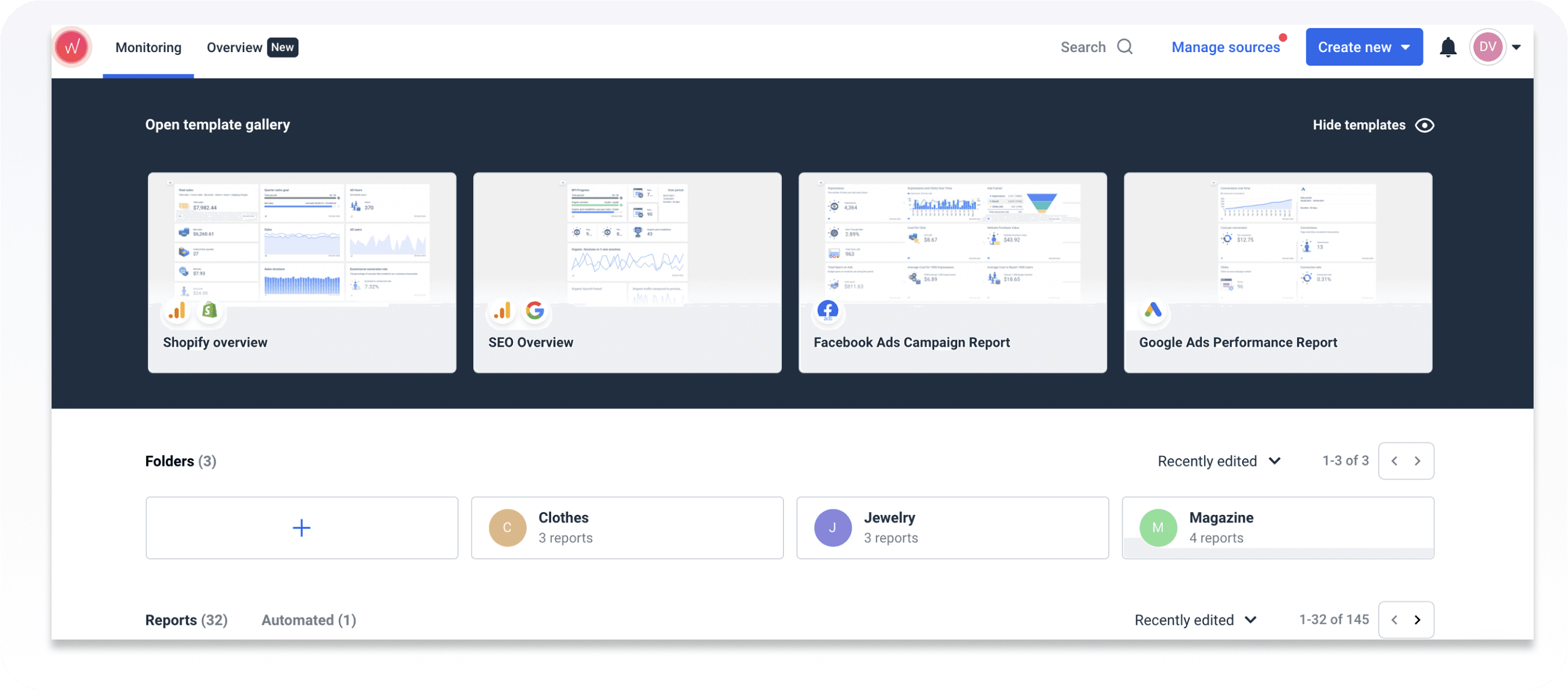
2. Sign in to your Facebook Ads accounts.
You can also link your other advertising accounts, such as Google Ads, LinkedIn Ads, and others!

3. Choose a Facebook report template.
Choose the Facebook Ads Report template from the pre-made templates menu. Yes, it's that effortless!
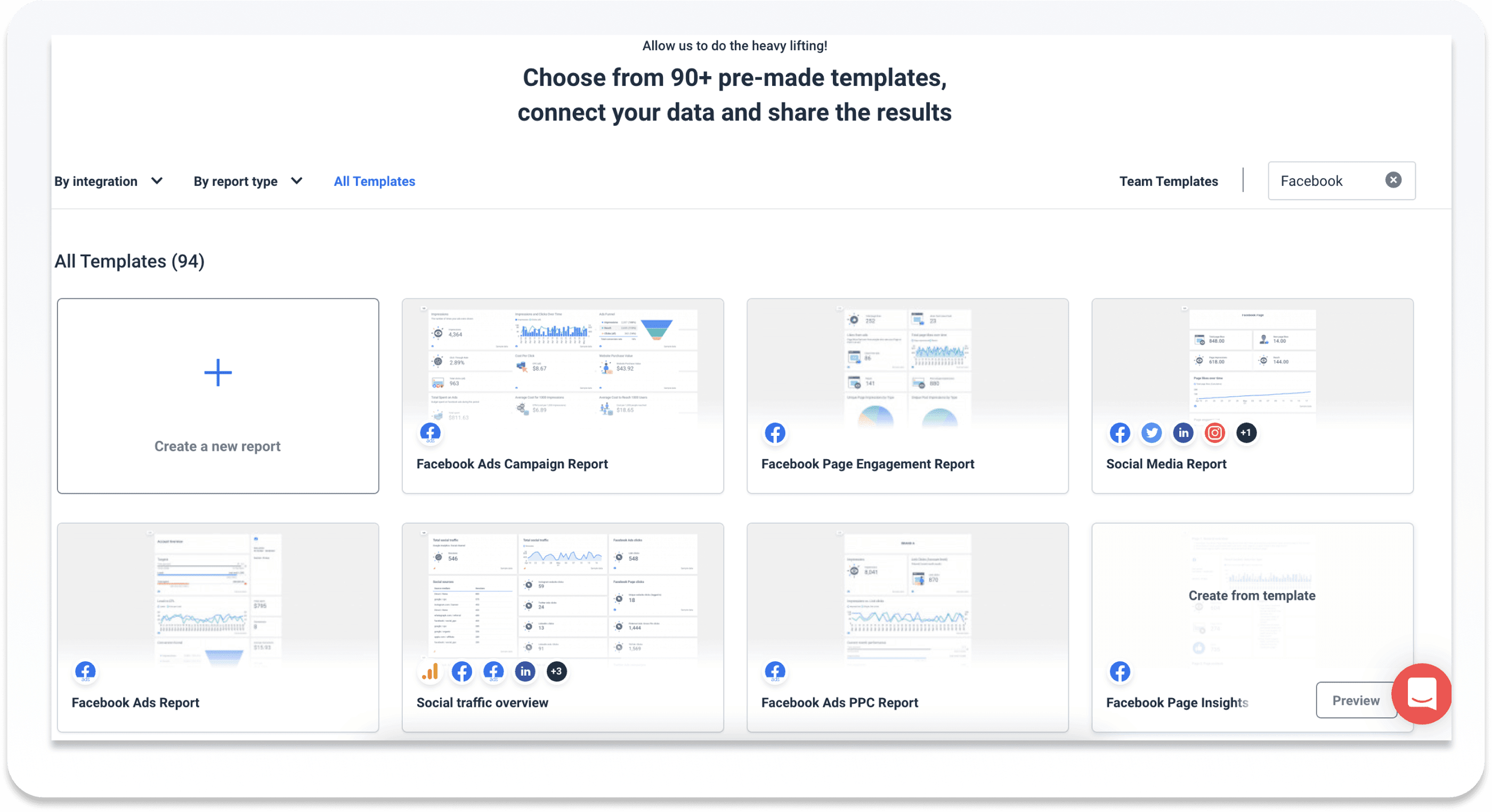
How to Use Whatagraph for Facebook Ad Reporting?
Your client may or may not know what they want to see on the Facebook ad report, so it’s your job to create a clear and in-depth report that will show the performance of their ad campaign. Whatagraph allows you to filter campaigns by objectives, dates, etc., as well as ‘zoom in’ each of them to evaluate the performance of every ad or ad set.
Through Whatagraph’s account, you’ll be able to see what works for a specific campaign and whatnot, as well as show your client the progress of their campaigns. The best thing about this tool is that it allows you to create custom reports.
Once you get to your Whatagraph account, choose a pre-made report template. Then use the customization feature and change anything and everything according to your client needs:
- Your client may ask for everything in a report, but don’t distract them with metrics that don’t matter. Instead, you should send them easy-to-read reports with a focus on a clear objective;
- You can send them a report every week or month, but sometimes it’s better if they see data for the whole month as things can change quickly;
- If you run more campaigns for separate objectives, you should create more reports, such as Page Likes Report, Conversion Report, Post Engagement Report, or Overview Report. It depends on the work you’re providing.
Furthermore, your report has a filter for a specific period. By default, it shows information about the last seven days, but you can change this to “‘his week’, ‘Last 14 days’, ‘ Last 30 days’, etc.
The next step is to schedule the report you’ve created to be delivered to your client’s inbox and yours. When viewing a specific report, click on the “Schedule” button. Select the right frequency and the start date. Then, enter the email addresses you want to receive the saved report. Your client will receive the page for the report as well as the export. Just don’t forget to give them access to the page for the report.
What to Include in the Client Facebook Report?
Before you can create a report for your client, you must first complete a few steps. Make sure you do each of them to show your client that you care.
- Because there are numerous Facebook report types (Sales, PPC, Marketing, and Social Media), determining your client's goals and vision should be the first step;
- Each objective has its own set of measurement units. As a specialist, you determine which metrics and KPIs are most important to your client and include them in the report;
- Plan the report's delivery date. Don't make your customers wait in the unknowingness. Inform them of your plans to keep them updated on the status of the project.
- Use customization to make the report have a feel of their brand. This way the report will be more engaging and make your client feel cared for;
- Use lots of visuals. Graphs, tables, and charts are not only your best friend but your client’s too. Not every client is tech-savvy or has lots of time. Provide quick snappy data reports letting them immediately know what's going on with their channels.
How to Find the Relevant Ad, Ad Set, or Campaign?
Use Facebook Ads integration and search for a specific ad, ad set, or campaign: Search, Filters, Date range, and Ad tier.
- Search – find your campaign, ad set, or ad by searching their name or ID;
- Filters – filter them by Saved Filters, Objective, Delivery, Buying Type, Placement, Metrics, and Date Updated;
- Date range – select one of the following date ranges: today, lifetime, yesterday, last 30 days, last 14 days, last 7 days, this month, or custom;
- Ad tier – choose whether you want to find all ads, all ad sets, or all campaigns.
Conclusion
Monitoring the performance of Facebook ads and campaigns is crucial for success and high ROI. You need to inform your clients of the progress of their campaigns through Facebook ad reporting, and the easiest way to create these reports is with Whatagraph by integrating Facebook data. Here, you can custom concise reports containing only the relevant metrics, and schedule them to be emailed to your client’s inbox.
Published on Jan 23 2020

WRITTEN BY
Dominyka VaičiūnaitėDominyka is a copywriter at Whatagraph with a background in product marketing and customer success. Her degree in Mass Communications/Media Studies helps her to use simple words to explain complex ideas. In addition to adding value to our landing pages, you can find her name behind numerous product releases, in-app notifications, and guides in our help center.
Get marketing insights direct to your inbox
By submitting this form, you agree to our privacy policy







